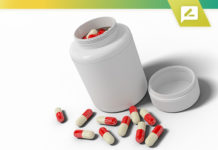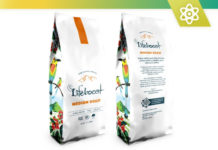Living with type 1 diabetes introduces daily complexities that require careful management. One of the more significant challenges is controlling blood sugar spikes that occur after meals. If not properly managed, these post-prandial spikes can lead to a host of symptoms and long-term health issues. This article delves into why these spikes happen, their importance, and ways to mitigate them effectively.
When individuals consume a meal, especially one rich in carbohydrates, it is normal for a temporary increase in blood sugar levels. This fluctuation, known as a post-prandial spike, occurs before the insulin the body produces starts to lower the sugar level. For individuals with type 1 diabetes who cannot produce insulin naturally, these spikes can be higher and last longer. This is due to the delayed action of the injected or pumped insulin compared to the natural insulin response. Additionally, people with type 1 diabetes may experience faster digestion of meals due to alterations in digestive enzymes, leading to more significant blood sugar spikes.
Reducing the size and duration of these spikes is crucial for maintaining overall health. Increased time within the target blood sugar range (“time in range”) positively impacts future health outcomes. While individual target ranges may vary, the International Society for Paediatric and Adolescent Diabetes (ISPAD) recommends a post-meal blood sugar target of 5.0-10.0 mmol/L. Achieving this can alleviate symptoms such as thirst, tiredness, and frequent urination. Short-term benefits include improved energy, cognitive function, athletic ability, and overall mood.
Continuous glucose monitors (CGM) or Flash monitors are highly beneficial to detect and manage blood sugar spikes. These devices provide a comprehensive view of blood sugar patterns post-meal without the need for finger pricking. If CGMs are unavailable, consulting with a healthcare team about the best methods for finger prick testing can be helpful. Knowing the exact timing of these spikes is essential for proper management. On average, post-meal peaks occur about one hour and 15 minutes after starting a meal. However, this can vary from person to person.
Identifying a blood sugar spike involves monitoring post-meal readings and comparing them against individual target ranges or ISPAD recommendations. Consistently high readings post-meal indicate the need for intervention. Awareness of the dawn phenomenon, which refers to hormonal changes in the morning causing increased sugar levels, is also vital.
Strategies to Reduce Blood Sugar Spikes After Meals
- Choose Low Glycaemic Index Foods: The glycaemic index (GI) measures how quickly foods raise blood glucose levels. High-fiber foods, solids, high-fat foods, cold foods, and undercooked or under-ripe foods generally have lower GIs and digest slower than their counterparts. Opting for low-GI foods like oats, wholemeal bread, and pasta can help mitigate post-meal spikes by allowing insulin to work effectively. Conversely, high-GI foods are valuable when treating hypoglycemia due to their rapid absorption.
- Choosing the Right Insulin and Timing: Rapid-acting insulins like Humalog, Novorapid, and Apidra are more effective at covering post-meal rises than regular insulin. Newer ultra-rapid insulins, such as Fiasp, provide even faster action. For individuals with type 1 diabetes and gastroparesis (a condition causing delayed digestion), timing insulin injections before meals can be beneficial. Ideally, insulin should be administered 15-20 minutes before eating to prevent spikes. Accurate carbohydrate counting aids in determining the appropriate insulin dosage, and tools like the Carbs & Cals book or app can assist in this process. It is crucial to consult with healthcare teams for personalized insulin timing strategies.
- Add Food Barriers or Split Meals: Foods high in fat or protein slow down the digestion of carbohydrates. Balanced meals containing protein, fats, and low-GI carbohydrates help stabilize blood sugar levels post-meal. For example, replacing cereal with a slice of toast, egg, and avocado at breakfast can prevent spikes due to the protein and fat content. Eating vegetables or salad first can also give insulin time to act. If consuming a large meal, consider splitting it into smaller portions to avoid significant spikes.
- Incorporate Physical Activity: Light physical activity, such as a 10-15-minute walk after meals, can aid digestion and help manage blood sugar levels. Scheduling active chores such as shopping, housework, or walking the dog post-meal can further stabilize blood glucose levels.
- Prevent Hypoglycaemia Before Meals: Low blood sugar can accelerate gastric emptying, causing quicker digestion and subsequent blood sugar spikes. Maintaining stable blood glucose levels before meals helps prevent these post-meal spikes.
Additional Considerations
Managing blood sugar levels with type 1 diabetes requires constant attention and effort. Regularly reflecting on daily food choices and insulin timing can lead to better control of blood glucose levels. Some questions to consider before eating include identifying carbohydrate-containing foods, counting carbohydrates accurately, recognizing meals that typically cause spikes and planning strategies to maintain good glucose levels post-meal.
While it may be challenging, celebrating daily efforts rather than seeking perfection in blood glucose numbers can be motivational. Working at your own pace and seeking support from your diabetes team is vital for effective management. Sharing personal experiences and strategies can also be beneficial. For instance, the Know Diabetes blog offers insights and tips from healthcare professionals and individuals living with diabetes.
In conclusion, understanding and managing blood sugar spikes after meals is crucial for individuals with type 1 diabetes. Individuals can better control their blood sugar levels and improve overall health and well-being by choosing low-GI foods, timing insulin appropriately, balancing meals, incorporating physical activity, and preventing hypoglycemia. Engaging with healthcare teams and utilizing resources like the Know Diabetes blog can provide additional support and guidance in this ongoing journey.













![Bowflex Max Total: 2024 Fitness Workout Exercise Machine [Review] Bowflex Max Total: 2020 Equipment Review For Complete Upper and Lower Body Workout](https://www.advancedliving.com/wp-content/uploads/2019/12/Bowflex-Max-Total-218x150.jpg)


